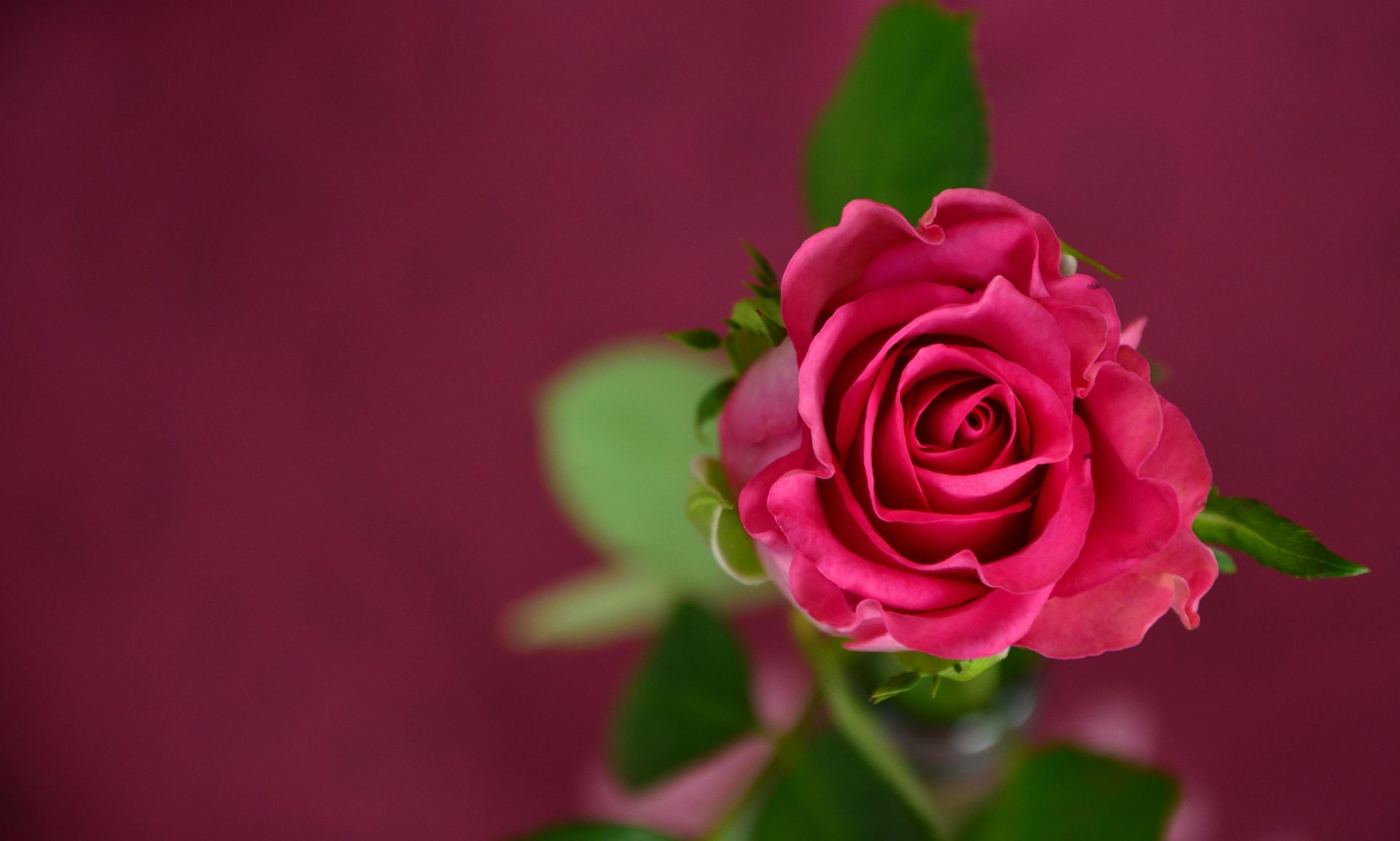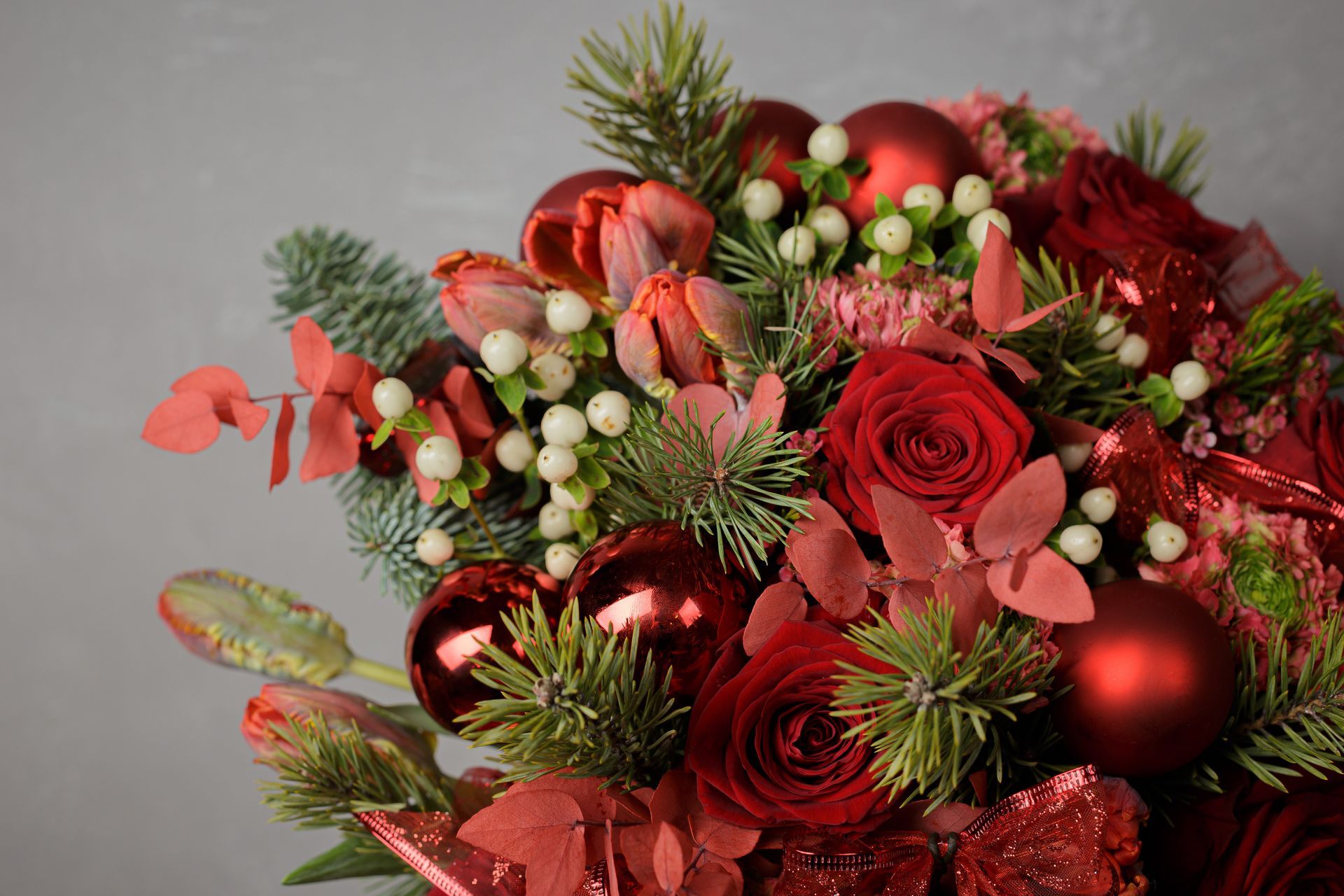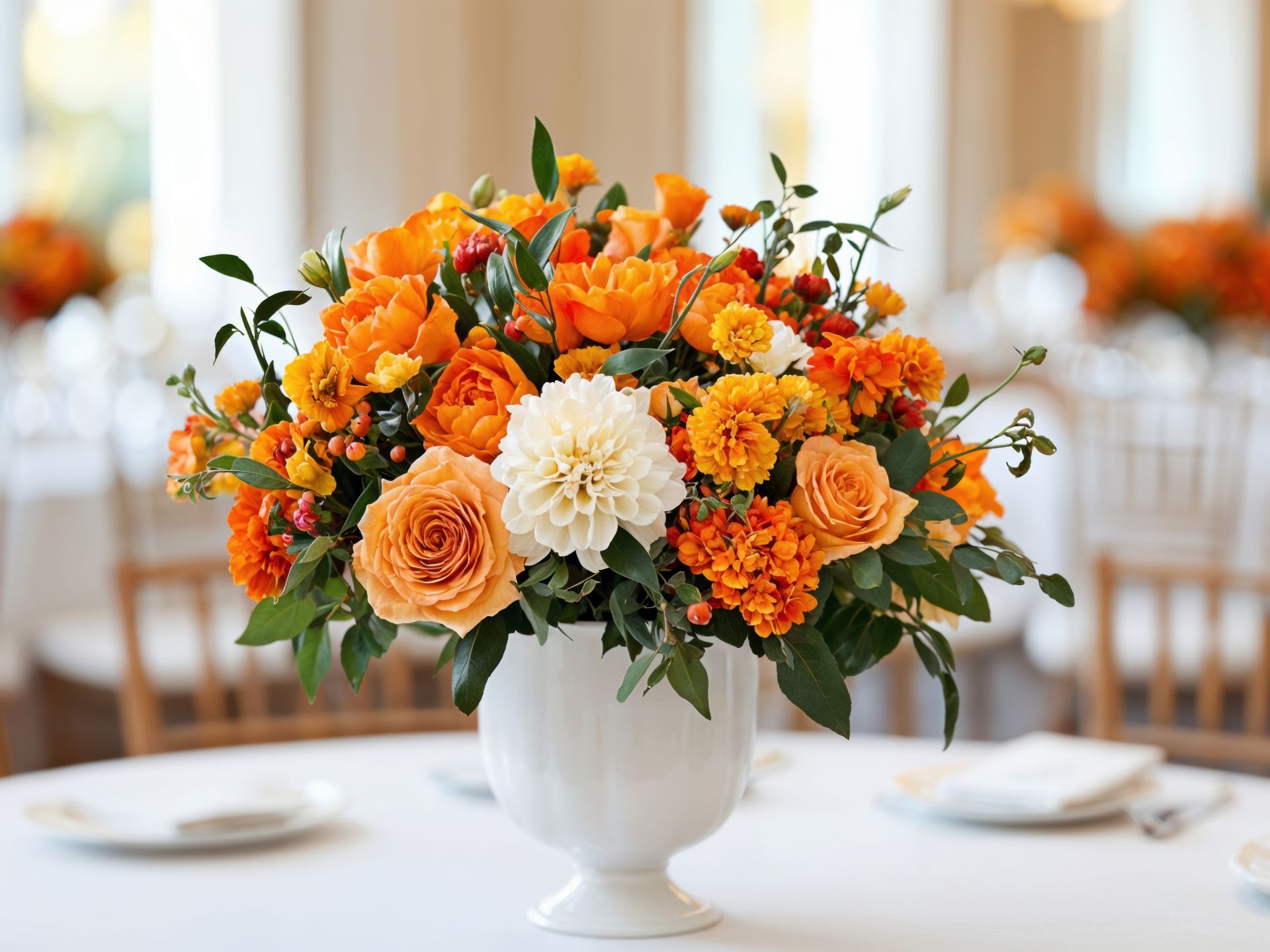Welcome to Blanche Darby Florist! Family owned and operated, we have been proudly serving Mount Pleasant since 1935.
We look forward to serving you today with beautiful flowers!
Floral Traditions Blog & Newsletter
by Blanche Darby Florist

By Thomas Minieri
•
February 2, 2025
Did you know that over 250 million roses are grown yearly specifically for Valentine’s Day alone? Flowers have long been a universal symbol of love, beauty, affection, and more. As Valentine’s Day approaches, many people ask themselves, “How can I make this year truly memorable for the one I love?” If you are searching for the perfect way to express your feelings this season, nothing speaks louder than the perfect floral bouquet. Valentine’s Day is a time of joy, but choosing the perfect gift can also be stressful. You want to make your loved one feel cherished, yet you are unsure how to select the ideal gift that shows them how you truly feel. Chocolates are sweet, and jewelry is thoughtful, but flowers carry an unmatched elegance. However, selecting the ideal bouquet can feel overwhelming, especially for someone who may not know much about floral arrangements. Should you choose classic red roses or something more unique? What if your loved one has a favorite flower or color? How do you ensure the arrangement feels personal rather than generic? These are common concerns people have when shopping for Valentine’s Day flowers. What the audience truly wants is simple: a thoughtful and stunning floral arrangement that perfectly captures their emotions. Whether for a romantic partner, a family member, or a dear friend, we know you want your gift to make an unforgettable impression on your loved one. At Blanche Darby, we take the stress out of choosing the perfect Valentine’s Day bouquet. Located in the heart of Mount Pleasant, our team of expert florists combines creativity and care to craft breathtaking arrangements tailored to your wants and needs. Customized Designs: Whether you want a classic bouquet of red roses or a unique mix of seasonal blooms, we create arrangements that feel personal and meaningful. Premium Quality: We source only the freshest flowers to ensure your bouquet remains vibrant and beautiful long after Valentine’s Day. Convenient Delivery: Surprise your loved one at home, work, or a special location with our reliable delivery service, spreading joy all across Charleston. Guidance and Expertise: Not sure what to choose? Our team will walk with you every step of the way to help you design the perfect arrangement that reflects your sentiments. Imagine the look of delight on your partner’s face when they receive a stunning bouquet designed just for them. Picture the fragrant aroma of fresh blooms filling their space that serve as a constant reminder of your love. Your thoughtful gesture will create lasting memories and deepen your connection, making this Valentine’s Day one you two will forever cherish. Don’t wait until the last minute to secure the perfect Valentine’s Day gift. Visit Blanche Darby online or in-store to explore our exclusive Valentine’s Day collection . Let us help you express your love in full bloom this season. Place your order today and make 2025 a Valentine’s Day that you and your loved one will remember for years to come!

By Thomas Minieri
•
December 2, 2024
Have you ever struggled to find a gift that feels both personal and thoughtful? A monthly flower membership just might be the answer you are looking for. Imagine receiving a fresh bouquet of vibrant, fragrant flowers at your doorstep every month. It is a gift that doesn’t just light up one day but continues to bring joy all year. Studies show that flowers can significantly improve mood and reduce stress, making them a perfect present for anyone on your holiday list. It is also a gift that will surprise anyone who receives it because it is unique and unexpected. The holiday season is a time of joy—but let’s be honest, it can also bring stress, especially when it comes to gift-giving. How often have you settled for a last-minute gift card or a generic item that lacked that special touch? Probably quite often. Many people want to give a gift that shows they care, something meaningful and unique, while also practical and easy to arrange. There is also the desire to find something that stands out among the flurry of typical holiday presents. Recipients often feel overwhelmed by one-time-use items or clutter-inducing knickknacks. What many people truly want is something that brings beauty, joy, and a sense of connection to nature—not just for one day but throughout the year. At Blanche Darby, we have crafted a solution that makes holiday gift-giving easier and extraordinary. Our monthly flower membership delivers seasonal, hand-selected arrangements directly to your recipient’s home. Each bouquet is thoughtfully designed to brighten any space, ensuring a lasting impression month after month and a beautiful surprise in every delivery. Here’s what makes our membership special: Convenience: You set it up once, and we handle the rest. No need to worry about shipping or forgetting a special occasion. Customization: Choose from a variety of styles and sizes to suit your recipient’s taste and space. Sustainability: We source eco-friendly blooms from trusted growers, ensuring a gift that’s as kind to the planet as it is to the recipient. Local Charm: As a Charleston-based florist, we incorporate the Lowcountry’s unique beauty into every arrangement, offering a personal touch that’s hard to beat. Picture this: Your loved one unboxes their first bouquet in January—a burst of fresh color to brighten the post-holiday blues. Each month brings a new arrangement, perfectly timed with the changing seasons. Spring’s pastel tulips, summer’s vibrant sunflowers, autumn’s rich chrysanthemums, and winter’s elegant amaryllis—a continuous cycle of happiness delivered straight to their door every month. The result? They will feel loved and appreciated, thinking of you every time they stop to enjoy their flowers. It is a simple yet profound way to show you care. Ready to give a gift that’s as unique as it is unforgettable? Sign up for our monthly flower membership today and bring the joy of fresh blooms to someone special. Call us to get started! Let’s make this holiday season one they will cherish all year long.

By Thomas Minieri
•
December 2, 2024
The holiday season is upon us, and with it comes the desire to create warm, inviting spaces for gatherings with family and friends. Did you know 87% of people say a well-decorated holiday table enhances their festive mood? A stunning floral centerpiece can transform your dining area into a visual masterpiece, setting the tone for unforgettable celebrations. Are you ready to elevate your space this holiday season? We have all been there. You are hosting a holiday dinner, and despite your best efforts, the table feels incomplete. Maybe the décor looks mismatched, or the space lacks that “wow” factor you hoped for. As holiday hosts, you want your guests to feel welcomed and impressed. But between shopping, cooking, and decorating, finding the time to create the perfect centerpiece can feel impossible and too time-consuming to achieve. What most people desire is simple–elegance without effort. They want floral arrangements that: Reflect the beauty of the season with rich, vibrant colors. Match their home’s aesthetic, whether it is rustic charm, modern chic, or traditional elegance. Make their table memorable without overwhelming the space or the budget. Incorporate local elements. The frustration lies in balancing beauty with practicality. Many store-bought options lack the uniqueness or quality you expect for special occasions. And while DIY projects sound fun, they are time-consuming and often lead to last-minute stress or unsatisfactory results. At Blanche Darby, we specialize in custom floral centerpieces that bring your holiday vision to life. Located in Charleston, SC, we understand the local charm and seasonal spirit, incorporating them into every arrangement we create. Here’s how we solve your holiday décor dilemmas: Custom Designs: Our experienced florists work with you to design centerpieces tailored to your preferences, from color palettes to flower types. Seasonal Blooms: Using high-quality, fresh flowers such as poinsettias, amaryllis, and winter greens, we create arrangements that capture the essence of the holidays. Hassle-Free Service: Whether you visit our shop or opt for delivery, we make the process seamless, so you can focus on hosting and enjoying your celebrations. Eco-Friendly Options: For those conscious about sustainability, we offer arrangements made with locally sourced and reusable materials. Picture this: Your dining room is aglow with the soft flicker of candlelight. At the center of your table rests a stunning floral arrangement, its deep reds, crisp whites, and lush greens perfectly complementing your décor. Your guests’ faces light up with admiration as they take their seats, and the conversation flows effortlessly. You feel proud, relaxed, and ready to enjoy the moment, knowing your table sets the stage for holiday magic. Are you ready to transform your holiday table? Visit Blanche Darby in Charleston, SC, or explore our online gallery for inspiration. Call us or place your order today to ensure your festive centerpiece is ready in time for the holidays. Let us make this season unforgettable—one bloom at a time.

By Thomas Minieri
•
September 27, 2024
Autumn in the Charleston and surrounding areas offer a variety of floral traditions that celebrate the season. For many locals, this is the time to transition their gardens, replacing summer blooms with hardy fall flowers like decorative cabbages, asters, and chrysanthemums. These plants thrive in Charleston’s coastal climate and add vibrant hues to landscapes as the days grow shorter. Charleston also has a rich history of using flowers in seasonal celebrations, from outdoor festivals to weddings. There is even a Fall Flower Festival in Downtown Charleston every fall at the Grace Church Cathedral. This year the festival runs from October 30th through November 1st. Many fall flowers commonly seen around town have symbolic meanings, and they play a central role in connecting Charleston's culture to the changing seasons. For example, aster flowers symbolize love, daintiness, trust, and cheerfulness in old age. The Charleston area is bustling with weddings during the fall season, and it's almost impossible not to see a wedding each weekend from September to November. Fall is a magical time in Charleston, and nothing sets the tone like stunning floral arrangements. This season, we are seeing couples embrace rich, earthy tones and unique floral combinations for their big day. Think burgundy dahlias, golden sunflowers, and soft cream roses paired with eucalyptus and seasonal foliage. Whether you are planning an intimate gathering or a grand celebration, our expert florists can create breathtaking arrangements that bring your vision to life.

By Thomas Minieri
•
September 27, 2024
Charleston’s mild fall weather provides the ideal conditions for certain flowers to thrive. As the summer heat fades, Charleston’s fall temperatures range from the high 70s to the low 60s (°F). This cooling period offers relief from the intense heat, encouraging longer bloom times for flowers like marigolds, pansies, and chrysanthemums. Heat-sensitive flowers that may have struggled in summer thrive better in the mild weather. Cooler temperatures in the morning and evening paired with the still-warm soil allow flowers like asters, snapdragons, and pansies to flourish. Flowers like daffodils and tulips are usually planted during fall and begin rooting during this time, prepping for spring blooms. Fall rainfall in Charleston is moderate, with occasional showers that provide necessary moisture. Consistent rainfall helps maintain soil hydration, ensuring flowers continue to grow without excessive watering. This unique climate extends the growing season, allowing fall flowers to bloom into late autumn. This longer season is perfect for both summer holdovers and fall plantings. Asters, which are often mistaken for daisies, are known to attract butterflies, adding an extra touch of nature to Charleston’s gardens. The city’s blend of lower humidity (compared to the summer months) and cooler breezes creates a haven for these resilient flowers, offering residents and visitors a longer window to enjoy fall’s natural beauty. Charleston’s mild fall weather creates favorable conditions for flowers, extending their growth period and reducing heat and humidity stress. However, gardeners must monitor rainfall to prevent over-watering and ensure soil drainage.

By Thomas Minieri
•
September 27, 2024
Fall flowers carry rich symbolism that has been shaped by centuries of cultural and historical meanings. The colors and varieties associated with autumn often reflect the season’s themes of transition, reflection, and harvest. Fall flowers have long been associated with deeper meanings and symbolism, making them a thoughtful addition to any autumn celebration. In many cultures, marigolds are linked to the sun, representing warmth, optimism, and creativity, while in others, they are used as symbols of remembrance. Chrysanthemums, often seen in Charleston gardens, have diverse meanings depending on the color – yellow symbolizes happiness, while white stands for purity and honesty. Pansies, often planted in the fall, are delicate yet hardy flowers that symbolize remembrance and thoughtfulness. Their "faces" are said to resemble a thoughtful expression, which gives them their symbolic connection to reflection and memory. Interestingly, decorative cabbages are often planted in gardens in the fall. While not a typical "flower," they symbolize abundance and strength. Understanding these meanings allows us to connect more deeply with the natural world, appreciating the beauty and stories behind the flowers that bloom in the fall. The symbolism of fall flowers adds depth to the beauty of the season. Whether through their rich colors or cultural significance, each bloom tells a story that connects us to nature and the cycle of life. As Charleston transitions into autumn, these flowers not only brighten the landscape but offer a chance to reflect on themes of change, resilience, and renewal.

By Thomas Minieri
•
September 27, 2024
As autumn arrives in Charleston, the city's gardens and landscapes transform with the rich colors and textures of the season. Fall flowers like chrysanthemums, marigolds, and sunflowers thrive in cooler temperatures and shorter daylight hours. Chrysanthemums, known for their resilience, have been cultivated for thousands of years and are celebrated worldwide as symbols of happiness and longevity. These flowers thrive around September when the summer heat begins to cool down. Marigolds, often referred to as the “flower of the dead,” are an integral part of many ceremonies, such as Dia de Los Muertos. These flowers serve as a reminder of joyful times across generations and are a source of cultural pride. However, the meanings behind marigolds can differ among cultures. For example, the Aztecs perceived them as a lucky charm. Their rich colors and powerful fragrances make them an important part of traditions, festivals, and rituals worldwide. Sunflowers are not typically associated with fall months, but several varieties bloom in the early fall, such as annual, perennial, and swamp sunflowers. With their bright, golden petals, Sunflowers add warmth to the autumn season and have a fascinating ability to follow the sun, a phenomenon called heliotropism. In Charleston, these flowers add a vibrant contrast to the subtropical foliage, creating a unique blend of seasonal beauty.
Family owned and operated, Blanche Darby has been proudly serving Mount Pleasant, South Carolina with beautiful flowers since 1935.
Contact Us
(843) 971-0559
info@blanchedarbyflorist.net
581 Belle Station Blvd
Mount Pleasant, SC. 29464





